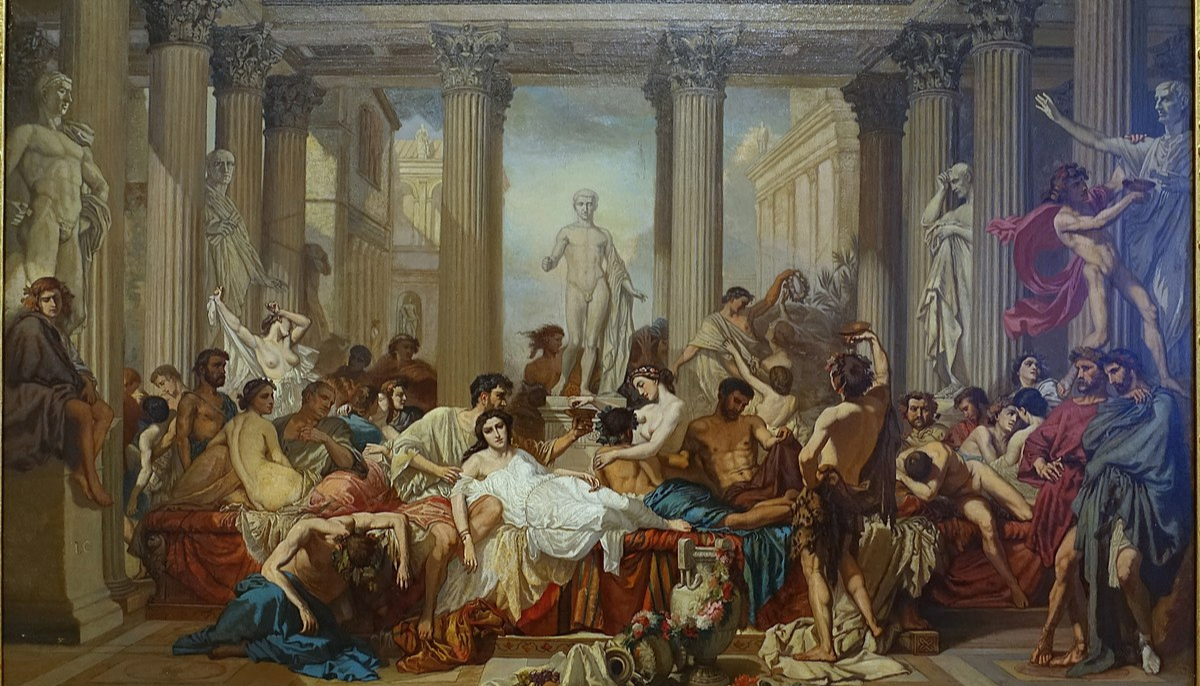From the simple breakfasts of the common folk to the elaborate dinners of the elite, and from their unique approach to beverages to their specialized kitchen utensils, the food and drink of ancient Rome offer a unique lens through which we can view their rich cultural tapestry.
In this exploration, we examine the Romans’ daily meals, drinking habits, and cooking tools. Join us on a journey through ancient Roman cuisine’s flavors, traditions, and innovations.
Ancient Roman breakfast
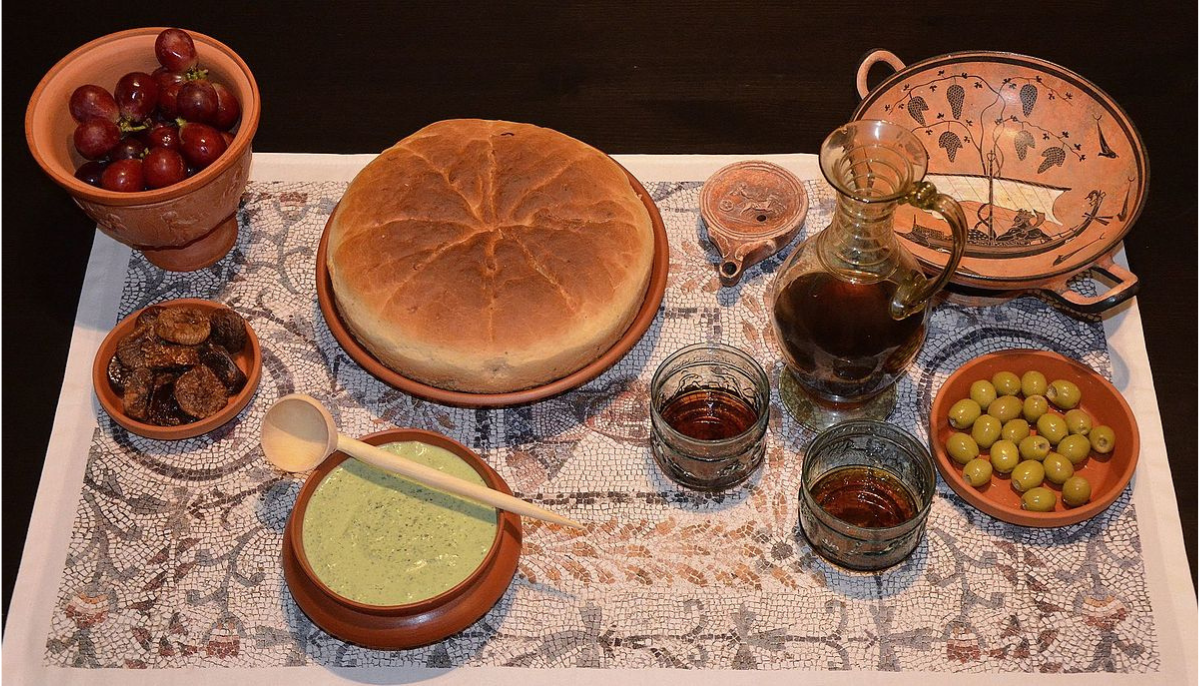
In ancient Rome, breakfast, known as “ientaculum,” was a meal that reflected the city’s economic divisions. The Roman society was starkly divided, with the elite class, including senators and prominent families, representing only a tiny fraction of the population.
A typical Roman day started early, and it was common for people to grab their breakfast on the go. Breakfast was a simple affair for the majority, who were less affluent. Bread was the staple element of their diet, consistent with the Roman adage of “bread and circuses.” The poor also commonly consumed a basic wheat and water porridge called “puls.” Meat was a rarity in their daily diet due to its expense.
In contrast, the wealthier Romans had a more diverse breakfast menu. While bread remained a key component, often softened by dipping it in wine, they also enjoyed additional items like fruits and, sometimes, meat or fish.
Everyday lunch in ancient Rome
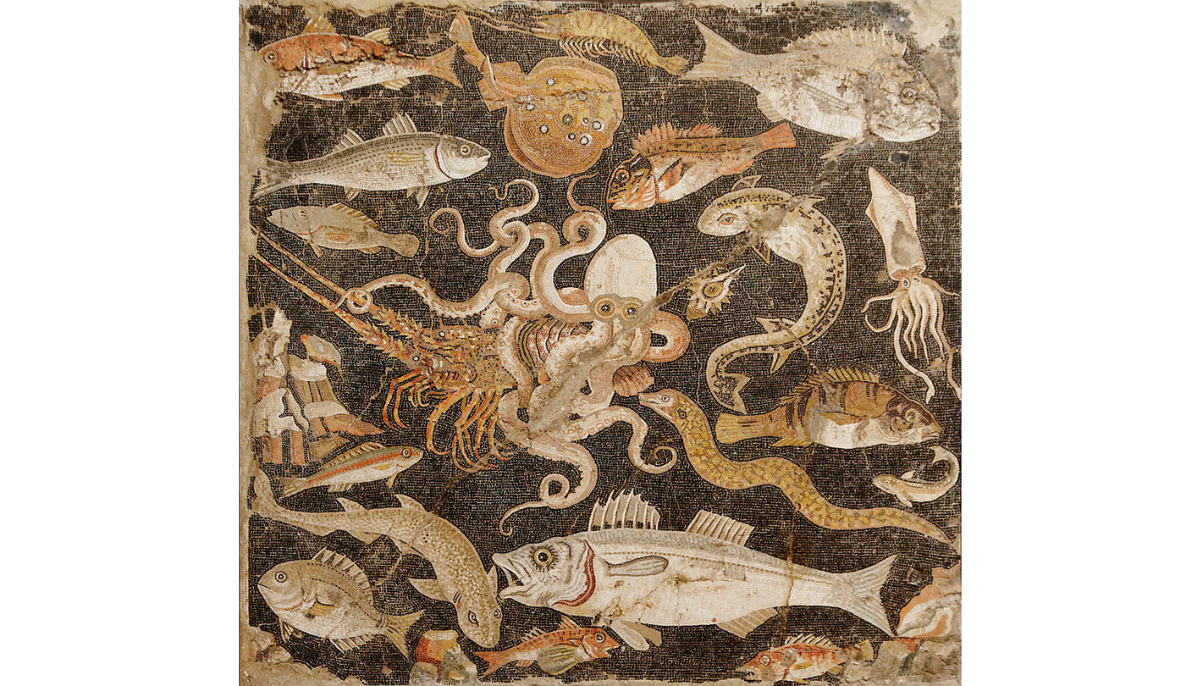
Lunch in ancient Rome, known as “prandium,” was a midday break that typically occurred around 11 AM. Romans, irrespective of their social status, would pause their day for this meal. However, similar to breakfast, the content of this meal greatly depended on one’s economic standing.
For most Romans, lunch was a light affair, not much different from their breakfast. It often included staples like bread, which could be complemented with olives, cheese, and fruit. Those who could afford it might add leftover meat or fish from a previous meal, but this luxury was not available to everyone.
The poorer population would likely have bread or puls again for lunch. Despite the brevity and simplicity of this meal, it was an essential part of the day, offering a brief respite and a chance to refuel before continuing with the afternoon’s work and activities.
Traditional dinner in ancient Rome
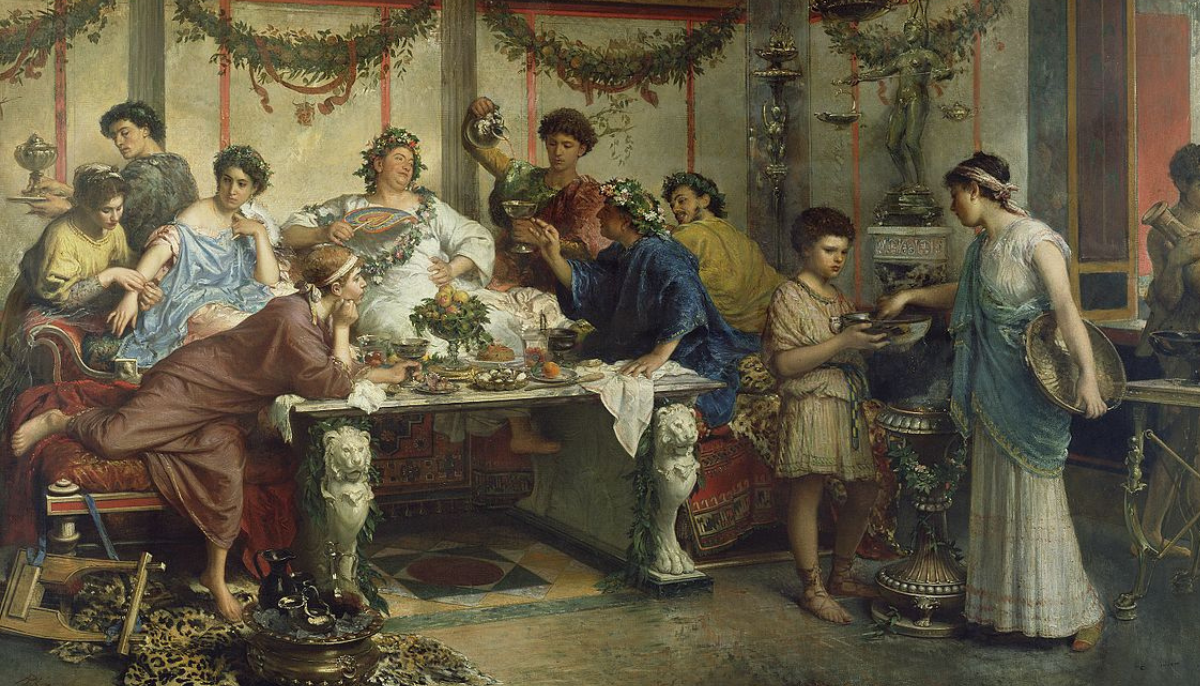
The main meal in ancient Rome, “cena,” was a significant part of daily life and culture. Typically, this meal was prepared by the women of the household or slaves, and it was often the children’s responsibility to serve the food. The cena was a time for families to gather and dine together, solidifying family bonds and social ties.
In wealthier Roman households, the cena was a more elaborate affair. Fish was favored over meat, with oysters being particularly popular. These meals often took the form of dinner parties, where guests recline around a low table, resting on their left arm while eating with their right hand. This posture was considered formal dining etiquette. In contrast, standing or sitting on a stool signified a less formal setting.
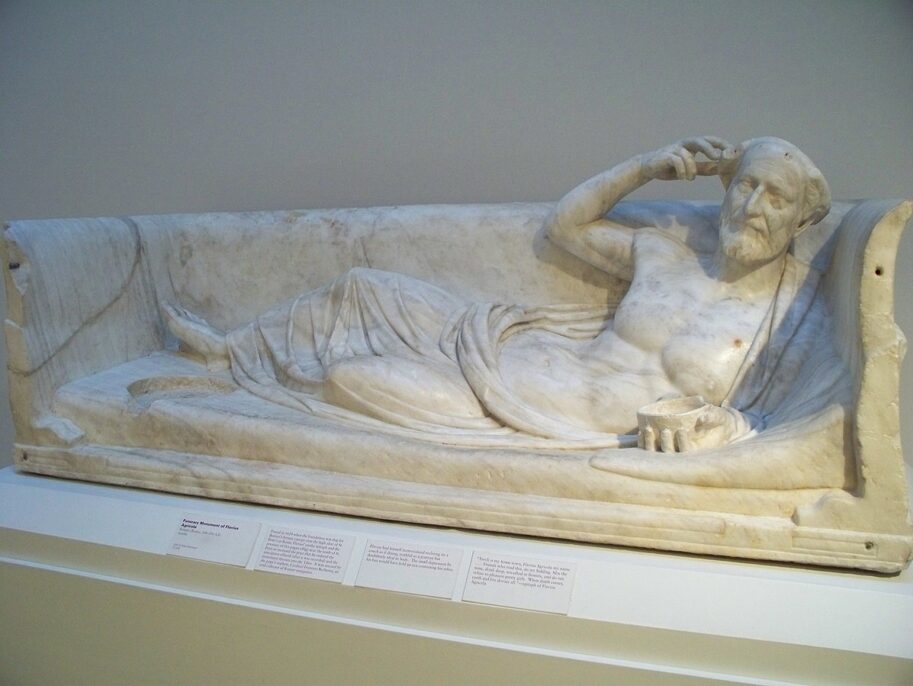
A notable feature of Roman cuisine was the widespread use of a famous sauce known as “garum.” Made from fermented fish, garum was a culinary staple akin to modern Worcestershire sauce. Its distinct flavor was a hallmark of Roman cooking and featured prominently in many dishes.
The cena was more than just a meal; it was a social event, particularly among the wealthy. It reflected the customs and lifestyle of ancient Rome, highlighting the differences in social classes through the variety and preparation of food. This meal was the centerpiece of Roman culinary culture, showcasing their appreciation for fine food, social interaction, and the art of hospitality.
Did Romans eat pizza and pasta?
Contrary to popular belief, ancient Romans did not eat pizza or pasta, the staples of modern Italian cuisine. Pasta’s appearance in Italian food history can generally be traced back to around the 13th century, long after the fall of the Roman Empire.
However, the Romans did have a dish known as “tracta,” which might remotely resemble the concept of pasta or pizza. Tracta was a type of pastry, somewhat akin to a flatbread, made from a simple dough rolled out and then fried or baked. While it shares some basic similarities with pizza or pasta in preparation, it was pretty different regarding ingredients and culinary use.
Moreover, key ingredients commonly associated with Italian cuisine today, such as tomatoes and lemons, were not part of the Roman diet. Tomatoes, native to the Americas, were not introduced to Europe until the 16th century, well after the Roman era. Similarly, though known to the Romans, lemons were not widely used in their cooking.
ancient roman drinks
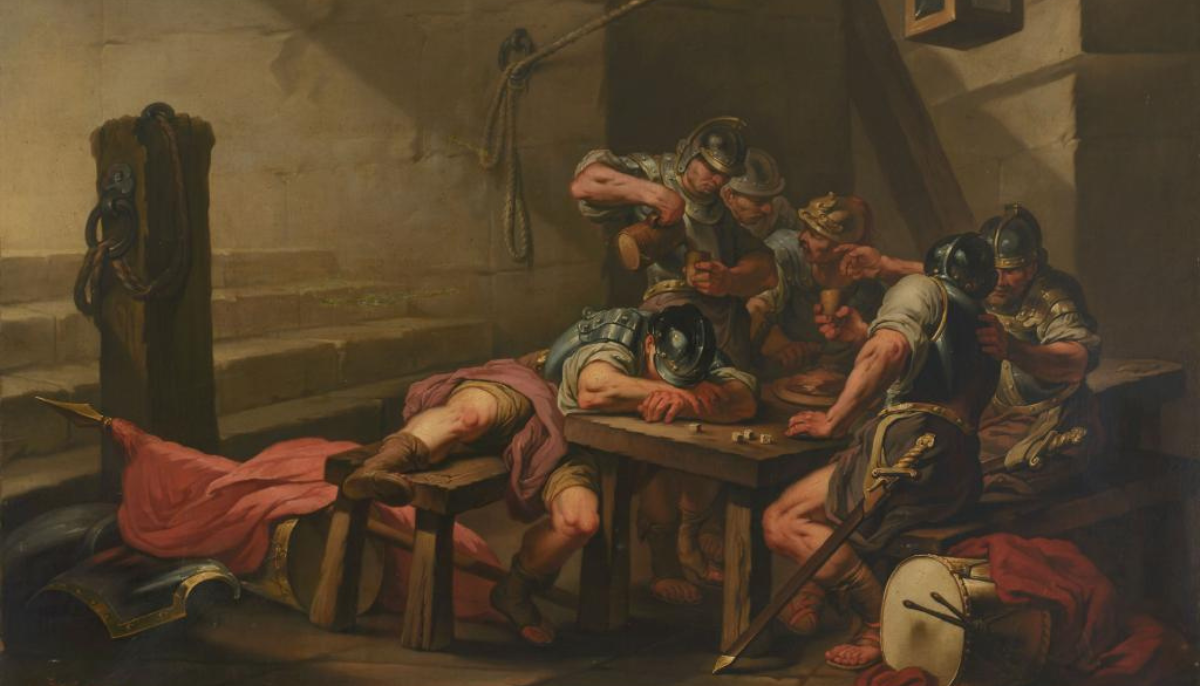
Greek and Phoenician traditions heavily influenced the drinking culture in ancient Rome. This influence was not always welcomed; conservative Romans, like Cato the Elder, often drank lower-quality wine to protest against the increasing Greek cultural impact in Rome. Drinking high-quality wine was seen not just as a matter of taste but also as a moral issue. The tension between Roman and Greek cultural elements was a common topic during the late republic. Similar tropes played out between Cicero and Cleopatra.
The necessity of consuming wine in ancient Rome was partly due to the poor water quality. In most cities, the water was too polluted to drink safely. As a result, wine became the primary beverage for Romans, typically consumed in a diluted form. Drinking undiluted wine was considered barbaric by Roman standards. Sometimes, the wine was spiced or sweetened; a popular variant was ‘mulsum,’ a honeyed wine.
A special drink known as ‘posca‘ was common among soldiers and slaves. This was a diluted mixture of vinegar and water, known for its refreshing properties and ease of production.
Milk was rarely consumed by Romans, who viewed it as uncivilized. Similarly, while not popular in Rome itself, beer and ciders were likely consumed in some Roman provinces like Gaul and Britain. The Roman drinking habits and preferences offer a fascinating glimpse into their daily life, societal norms, and cultural influences.
Ancient Roman kitchen utensils
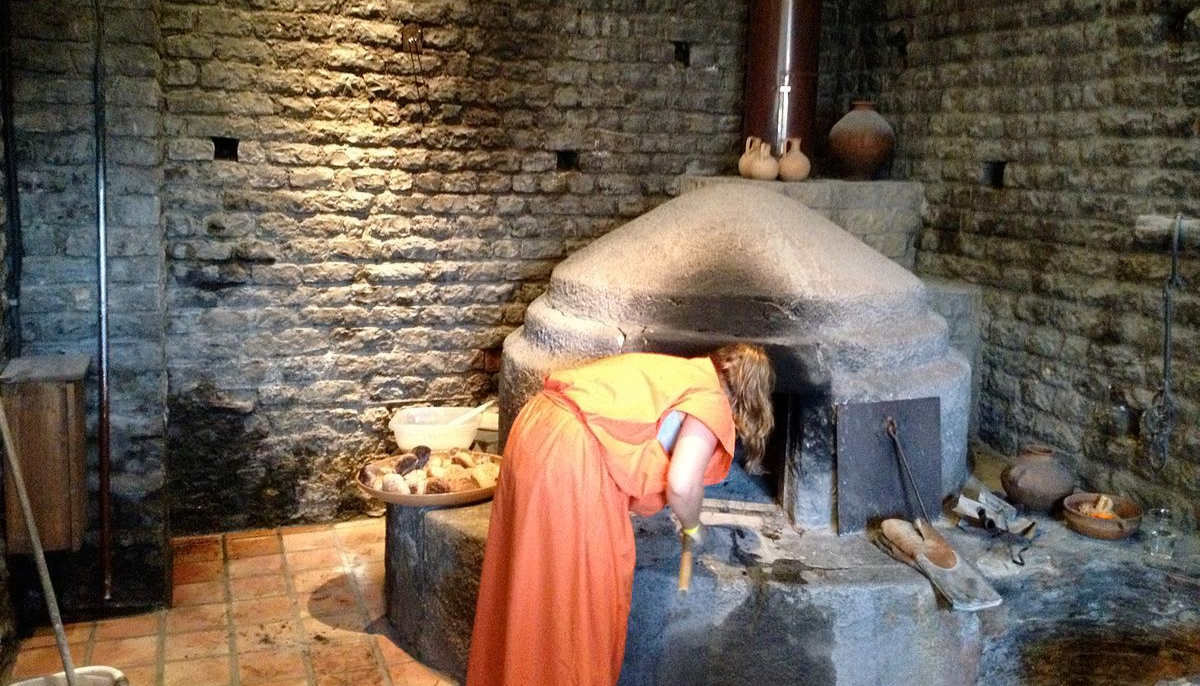
In ancient Rome, cooking was predominantly done over a fire, with the central fire of the house known as the “focus.” Fire held significant cultural importance, symbolized by the eternal flame guarded by the Vestal Virgins. Some Roman kitchens also featured a furnace resembling a modern-day pizza oven, providing a more controlled environment for baking.
Archaeological discoveries have revealed various kitchen utensils and cooking equipment used in Roman kitchens. These items reflect the complexity and sophistication of Roman culinary practices.
Among the utensils found were bronze frying pans, used for various frying and cooking purposes. Iron roasting trays were another staple in Roman kitchens, suitable for preparing meats and other hearty dishes. The pestle and mortar were essential for grinding and mixing spices and herbs, a key element of Roman cuisine.
For serving and drinking, Romans used a variety of containers. These included cooking pots for preparing meals, kettles for boiling, and meat hooks for suspending cuts of meat, either for storage or during the cooking process.
Regarding cutlery, Romans had an assortment of knives of various sizes, catering to different cooking needs. A wide variety of spoons and ladles were also in use, essential for serving soups and stews. Forks, as we know them today, were not common in Roman times; the Byzantines later developed this utensil.
The culinary world of ancient Rome was rich and diverse, reflecting the complexities of Roman society. From the economically divided breakfasts to the elaborate cena, Roman meals were deeply intertwined with social and cultural practices.
Understanding the food and drink of ancient Rome offers a fascinating window into the daily life, values, and customs of this great civilization, highlighting its similarities and stark differences to modern culinary practices.
